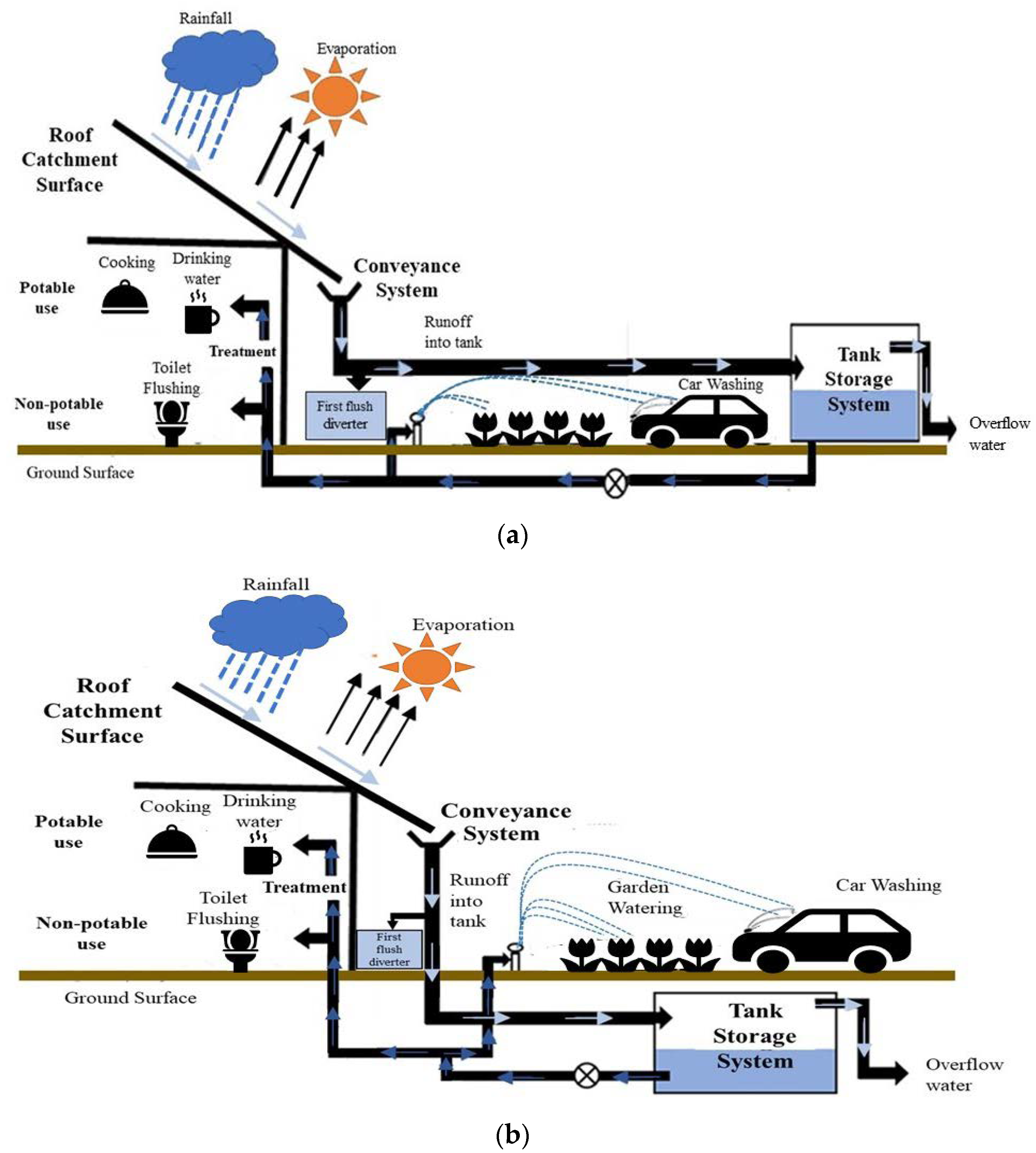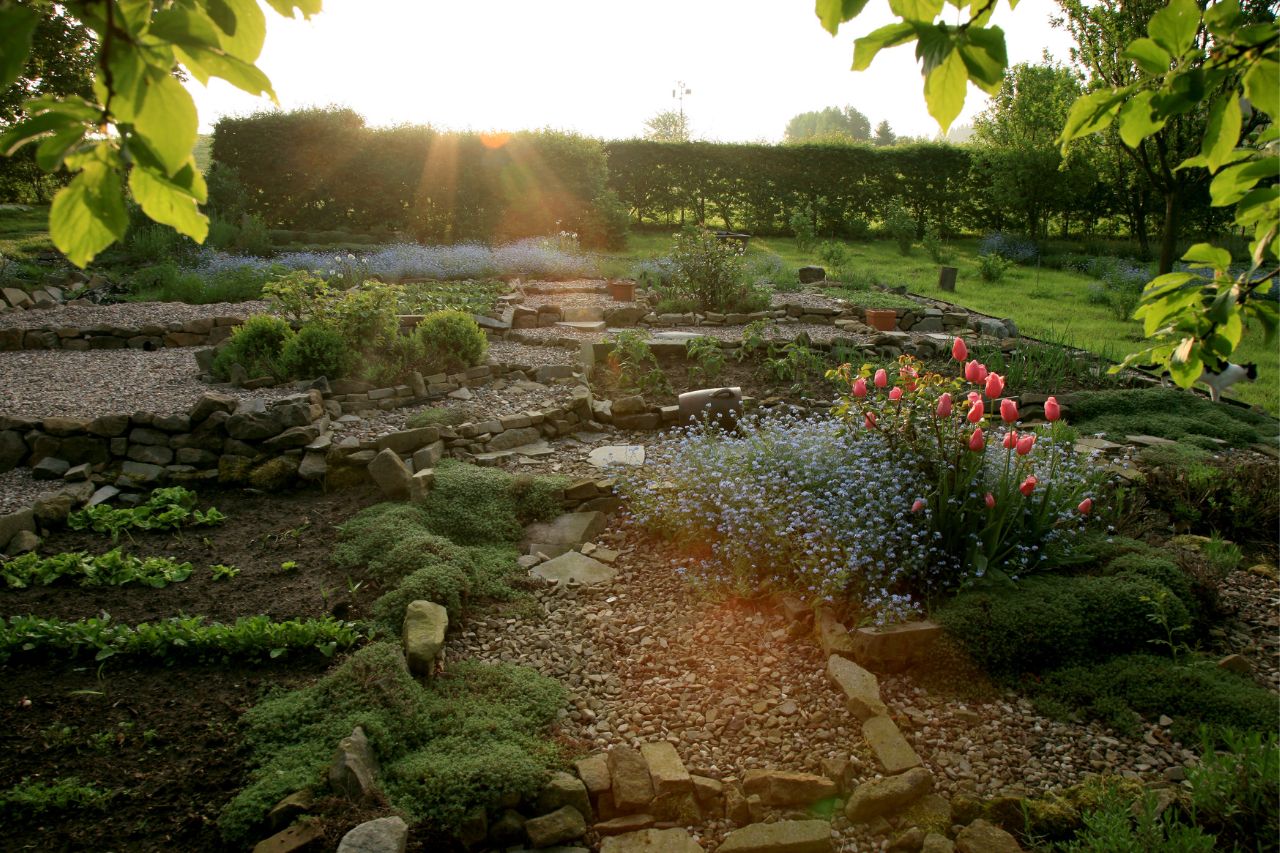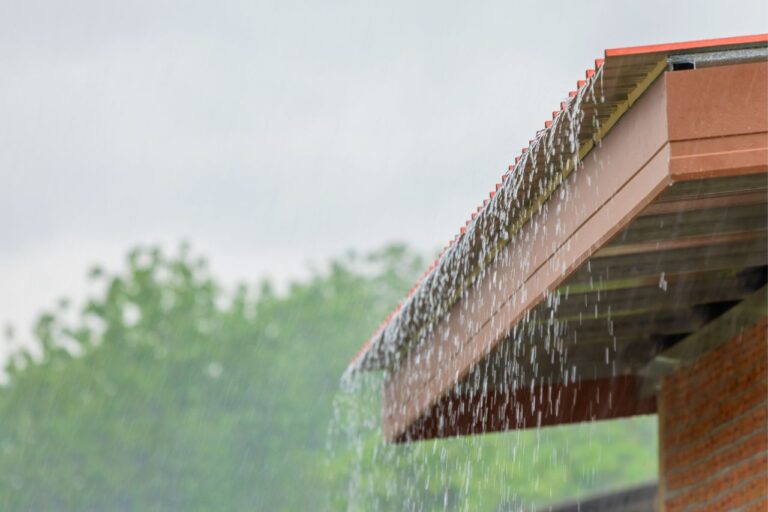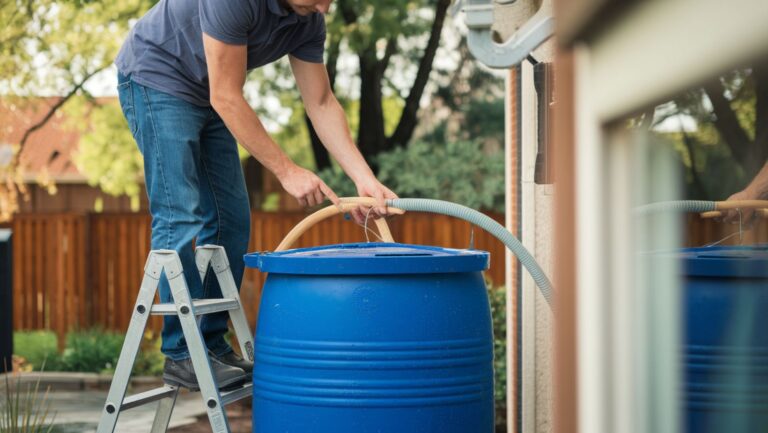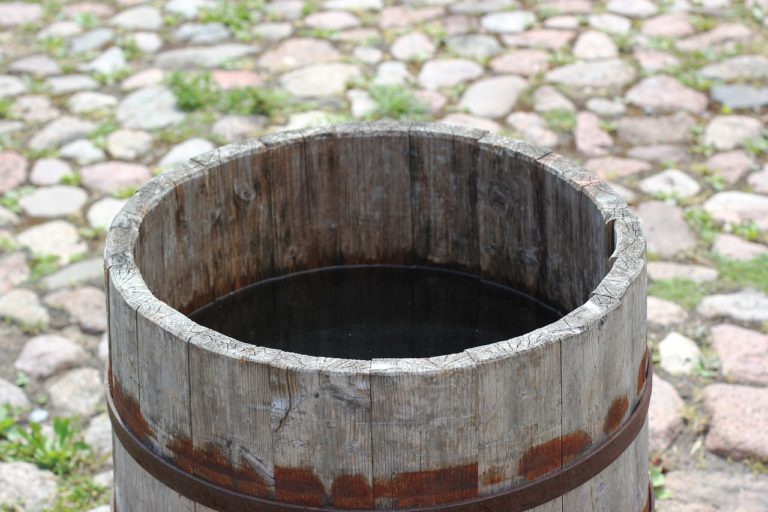Maximizing Rainwater Harvesting with a Passive Rainwater System
Water harvesting is a practical and effective solution for both floods and droughts. By utilizing gravity and vegetation, passive water harvesting captures, stores, and uses rainwater to create a resilient and vibrant garden. Dr. Cally Brennan, an expert in permaculture and water harvesting, shares her knowledge and skills in a video that covers various techniques such as capture and drainage, French drains, swale systems, and wicking beds. These techniques can be implemented in small spaces, making them accessible to anyone interested in improving their garden’s resilience to climate change and optimizing water usage.
In the video titled “The Self Watering garden: How to Create a Passive Rainwater System with Dr Cally Brennan” by Canberra Environment Centre, Dr. Brennan demonstrates the process step-by-step, providing valuable insights on how to build a sustainable garden. By incorporating passive water harvesting techniques, you can make a positive impact on your garden’s water management and adapt to the changing climate. Whether you have a large garden or a small balcony, Dr. Brennan’s techniques can be easily applied to create a self-sufficient and water-wise environment.
Passive Water Harvesting Techniques
Passive water harvesting techniques are methods that allow you to collect and utilize rainwater and runoff without the need for complex systems or active management. These techniques work in harmony with the natural environment, using gravity and vegetation to capture and store water. By implementing these techniques, you can significantly reduce your water consumption and contribute to the conservation of this precious resource.
Gravity and Vegetation
One of the key principles behind passive water harvesting is utilizing the force of gravity to direct water flow. By understanding the natural gradient of your landscape, you can strategically design paths and structures to guide water to where it’s needed. This can be achieved through careful contouring of the land or the use of swales, which are shallow, graded channels that slow down and spread water.
Vegetation plays a vital role in passive water harvesting as well. Planting trees, shrubs, and groundcovers can help to prevent soil erosion and promote infiltration, allowing more water to be absorbed into the ground. Additionally, the roots of plants act as natural “sponges”, absorbing water and reducing the chances of runoff.
Capture and Drainage Techniques
Passive water harvesting techniques include various methods for capturing and draining water. Two commonly used techniques are French drains and swale systems.
French Drains
French drains are a simple yet effective way to manage excess water. They consist of a trench filled with gravel or rocks, which allows water to seep into the ground while preventing soil from clogging the drain. French drains can be installed along the perimeter of your property or around specific areas prone to standing water.
Swale Systems
Swales are another technique used for capturing and managing water. They are essentially shallow, wide ditches that are designed to slow down the flow of water, allowing it to infiltrate into the soil. Swales are typically placed perpendicular to the slope of the land, which helps to maximize water absorption. They can be designed to follow the contour of the land or be strategically placed in low-lying areas to catch and store water.
Wicking Beds
Wicking beds are a fantastic option for passive water harvesting, particularly in limited spaces such as balconies or small gardens. These beds consist of a reservoir of water at the base, which is drawn up to the plant roots through a wicking action. By placing a barrier layer above the reservoir, you can prevent the roots from becoming waterlogged while still providing them with a consistent water source. This technique not only conserves water but also ensures optimal moisture levels for your plants.
Tools for Water Harvesting
To effectively implement passive water harvesting techniques, you’ll need a few essential tools. Two common tools used in these practices are A-frames and water levels.
A-Frames
A-frames are versatile devices used for measuring slopes and contouring land. They consist of two poles joined at the top, creating a triangular shape. By attaching a level to the crossbar, you can accurately determine the slope of the land and ensure that your swales and drainage systems are correctly designed. A-frames are simple to construct and can be made from readily available materials such as PVC pipes or wooden boards.
Water Levels
Water levels are essential tools for determining the contour of the land. They consist of a transparent tube or hose filled with water, with the ends placed at different points on the ground. The water level will naturally find its equilibrium, indicating the level of the ground at each point. By using this tool, you can ensure that your swales and other water management features are positioned correctly for optimal water movement.

Benefits of Passive Water Harvesting
Passive water harvesting techniques offer a range of benefits, both for individuals and the environment. Let’s explore some of the advantages that come with implementing these practices.
Preventing Floods
One of the significant benefits of passive water harvesting is its ability to prevent floods. By capturing and redirecting water through swales and French drains, you can minimize the risk of water pooling in undesirable areas. Effective water management reduces the chances of property damage and ensures the safety and well-being of both you and your neighbors.
Mitigating Droughts
Passive water harvesting also plays a crucial role in mitigating droughts. By capturing rainwater and storing it in underground reservoirs or wicking beds, you can ensure a steady supply of water during dry periods. This is especially important in areas prone to water scarcity, where access to water for domestic use or irrigation can be challenging.
Increasing Resilience to Climate Change
With climate change bringing about unpredictable weather patterns, passive water harvesting techniques provide a practical solution for increasing resilience. By actively managing and conserving water resources, you can adapt more easily to changing circumstances. The ability to sustainably harvest and utilize rainwater ensures a reliable water supply, even during periods of reduced rainfall or drought.
Improving Water Usage
Another significant benefit of passive water harvesting is the improvement of water usage. By utilizing captured rainwater for irrigation, cleaning, and other purposes, you reduce your dependence on municipal water sources. This not only conserves water but also helps to reduce strain on local water supplies. Additionally, water from passive water harvesting systems is often free from chemicals and additives, making it an ideal choice for watering plants and gardens.
Experience and Expertise
To gain a deeper understanding of passive water harvesting techniques, it’s essential to look at the experience and expertise of individuals who have been practicing these methods for years. Dr. Cally Brennan, renowned permaculture expert and practitioner, has dedicated her career to research and implementation of sustainable water management strategies. With extensive knowledge and hands-on experience, Dr. Brennan has contributed significantly to the field of passive water harvesting.
On top of Dr. Brennan’s expertise, there are many individuals worldwide who have been implementing passive water harvesting techniques for over a decade. Their invaluable experience provides valuable insights and tips for successful water management. By learning from those who have dedicated themselves to these practices, you gain practical knowledge and enhance your ability to implement passive water harvesting effectively.

Passive Water Harvesting in Small Spaces
Passive water harvesting is not limited to large areas of land. With careful planning and strategic design, you can implement these techniques even in small spaces, such as balconies or limited backyard areas. Let’s explore a couple of methods that work well in such scenarios.
Balcony Water Harvesting
If you live in an apartment or have limited outdoor space, balcony water harvesting is an excellent option. Simple tools such as rain barrels or small containers can be placed on your balcony to capture rainwater. This water can then be used to water your plants, reducing your reliance on tap water. By employing wicking beds or containers with a wicking mechanism, you can maximize water absorption and ensure your plants receive the moisture they need.
Wicking Beds for Limited Areas
Wicking beds are also an efficient choice for small spaces. These self-contained systems can be constructed using containers or raised beds with a wicking layer at the bottom. By filling the wicking layer with water, you create a reservoir that gradually feeds moisture to the plants above. Wicking beds are ideal for small gardens or balconies, providing a compact yet effective way to grow plants while conserving water.
Passive Water Harvesting Techniques for Flood Prevention
Flooding can cause significant damage to both properties and natural habitats. By implementing passive water harvesting techniques, you can play an active role in preventing floods. Let’s explore a couple of strategies that work well in flood-prone areas.
Redirecting Water Flow with Swale Systems
Swale systems are incredibly effective in redirecting water flow and preventing flooding. By strategically designing and placing swales along the natural contours of your property, you can capture and slow down water runoff. This allows more time for water to soak into the ground and reduces the overall volume of water reaching vulnerable areas. By managing the movement of water through swale systems, you can protect your property and surrounding areas from flood damage.
French Drains for Effective Drainage
French drains are an excellent tool for effective drainage in flood-prone areas. By digging trenches filled with gravel or rocks, you create channels that collect excess water and redirect it away from vulnerable areas. French drains are particularly useful in areas where water tends to accumulate, such as along property boundaries or in low-lying areas. By implementing these drains, you can ensure that water is efficiently drained and directed to more suitable locations, reducing the risk of flooding.
Utilizing Gravity to Control Water Movement
Another passive water harvesting technique for flood prevention is utilizing gravity to control the movement of water. By understanding the natural slope of your property, you can strategically design paths or channels that guide water away from flood-prone areas. This can be achieved by contouring the land or creating small berms or raised beds that redirect water to more suitable locations. By harnessing the power of gravity, you can effectively manage water movement and minimize the risk of flooding.

Passive Water Harvesting Techniques for Drought Mitigation
Droughts can have devastating impacts on both human populations and ecosystems. Implementing passive water harvesting techniques is an effective way to mitigate the effects of drought. Let’s explore a couple of strategies that can help you conserve and utilize water during dry periods.
Capture and Store Rainwater with Swale Systems
Swales are excellent tools for capturing and storing rainwater, even in arid regions. By carefully designing swales to follow the natural contours of the land, you can create depressions that collect and retain water. This stored water can then be used to irrigate plants and gardens during times of drought. By strategically locating swales and directing runoff towards them, you can maximize the amount of water collected and stored, ensuring a reliable water supply during dry periods.
Wicking Beds for Efficient Water Absorption
Wicking beds are another effective technique for conserving water during droughts. By constructing wicking beds with a built-in reservoir of water, plants can draw moisture from below the surface, minimizing water loss through evaporation. This efficient method ensures that plants receive the necessary moisture while reducing water consumption. Wicking beds are particularly suitable for garden beds, small spaces, or areas where access to water may be limited during drought conditions.
Resilience to Climate Change through Passive Water Harvesting
Climate change brings about unpredictable weather patterns, including more frequent and severe droughts. Implementing passive water harvesting techniques is an essential step towards building resilience. Here are some ways in which these techniques contribute to better adaptation and resource management.
Maintaining Water Supply during Dry Periods
One of the primary benefits of passive water harvesting is maintaining a water supply during dry periods. By capturing and storing rainwater, you ensure a reliable source of water for various purposes, such as irrigation and domestic use. This reduces dependence on external water sources, which may become scarce during prolonged droughts. By actively managing and conserving water resources, you can better adapt to changing weather patterns and ensure a sustainable water supply for your needs.
Reducing Dependence on External Sources
Another way in which passive water harvesting improves resilience to climate change is by reducing dependence on external water sources. Municipal water supplies often become strained during droughts, resulting in water restrictions and increased costs. By capturing and utilizing rainwater through passive water harvesting techniques, you can significantly reduce your reliance on these external sources. This not only ensures a more secure water supply but also allows you to contribute to the collective effort of preserving water resources for essential needs.
Adapting to Changing Weather Patterns
Passive water harvesting techniques offer flexibility and adaptability in the face of changing weather patterns. By utilizing systems such as swales and wicking beds, you can make adjustments to accommodate varying amounts of rainfall and temperature fluctuations. These techniques allow you to capture and store water during periods of heavy rain and conserve it during dry spells. This adaptability is essential for building resilience and ensuring a consistent supply of water, regardless of the changing climate conditions.

Improved Water Usage with Passive Water Harvesting
In addition to the environmental benefits, passive water harvesting also offers significant advantages in terms of improved water usage. Here are a few ways in which these techniques contribute to more efficient water management.
Reducing Water Waste
Passive water harvesting techniques significantly reduce water waste. By capturing and storing rainwater, you can effectively utilize water that would otherwise have been lost through runoff or evaporation. This reduces the strain on municipal water supplies and promotes responsible water usage. By implementing passive water harvesting, you become a steward of this precious resource, ensuring that every drop is put to good use.
Optimizing Water Distribution in Gardens
Another advantage of passive water harvesting is the ability to optimize water distribution in your gardens. By carefully designing swales or constructing wicking beds, you can ensure that water reaches the plant roots where it is needed most. This prevents water waste and maximizes plant health and growth. Additionally, passive water harvesting systems allow for slower, more controlled water delivery, promoting deep root growth and overall resilience of the plants.
Promoting Sustainable Water Practices
Perhaps one of the most significant benefits of passive water harvesting techniques is their ability to promote sustainable water practices. By actively conserving and utilizing rainwater, you become an advocate for responsible water management. This mindset extends beyond your own property, inspiring others to adopt similar practices and contribute to the preservation and sustainability of water resources. By implementing passive water harvesting, you play a vital role in ensuring the long-term availability of water for future generations.
Conclusion
Passive water harvesting techniques offer a holistic and sustainable approach to water management. By harnessing the power of gravity and vegetation, you can effectively capture, store, and utilize rainwater and runoff. These techniques not only reduce dependency on external water sources but also contribute to flood prevention, drought mitigation, and resilience to climate change. By implementing these practices, you become an active participant in sustainable water management, promoting responsible water usage and preserving this precious resource for future generations.
